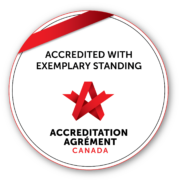4 Ways To Reduce CPAP Mask Irritation
While wearing a CPAP mask can dramatically change your life for the better, it can come with some unfortunate side effects to your skin: redness, rashes, sores and chafing are unsightly or even painful problems that sometimes go with the territory.
CPAP users, particularly those new to the treatment, can fall victim to air leaks and rubbing that cause skin irritation. Even seasoned veterans will tell you it can happen from time to time, especially to those with more sensitive skin.
Fortunately, there are easy ways to avoid these irritations and get on with enjoying better sleep.
Read on for some helpful tips…
- Size matters.
- Don’t go to sleep with an oily face.
- Avoid heavy moisturizing at bedtime.
- Keep your equipment clean.
- Time for a new mask?
- Shop CPAP masks
- We’re here to help!
Size matters.
A mask that’s too big or too small can cause skin irritations.
If your mask is too tight, it’ll leave indents on your face. If it’s too loose, it can leak air – this makes your mask shift around and rub against your skin, sometimes causing pretty painful sores. Adjusting the tightness of the straps on your CPAP mask at home can help customize your fit.
If strap adjustment isn’t enough to fix the problem, you could try a new mask with a different fit. There are masks out there with minimalist designs and reduced contact points; good ones include the AirFit P10, the Swift Fx, the Brevida, the DreamWear, the AirFit N30i and the AirFit P30i.
If you need the coverage of a full face mask but your skin is sensitive, a good option is the Airtouch F20 – instead of silicone, it has an UltraSoft memory foam cushion that’s uniquely comfortable.
It can be tough to tell just which mask you need when you’re new at it – but Apnea Health will help you figure that out.

Don’t go to sleep with an oily face.
Your face can get pretty oily in the course of a day.
Be sure to wash your face with soap and water before putting on your mask, because clean skin will prevent your cushion from sliding around. A mask that moves too much while you sleep will leave red chafing marks on your cheeks. If you can, it’s ideal to do your washing an hour before bed, to avoid transferring products to your mask.

Avoid heavy moisturizing at bedtime.
If you need to moisturize your face, Aeromate moisturizer and mask sealer helps alleviate chafing. Its non-petroleum, aloe-based formula soothes sensitive skin while providing a seal around the mask.
If it’s the bridge of your nose that tends to get irritated, try putting a nasal pad under your mask. The Gecko Nasal Pad is a comfortable, soft strip that goes across the nose to reduce irritation and leaks.
Keep your equipment clean.
Cleaning your CPAP mask is important. It helps eliminate bacteria that can cause irritation or infection, and it’s actually easy to do – you can watch Jess’s video to learn best practices for CPAP cleaning.
You should avoid scented soaps, and never use alcohol, vinegar, bleach, or over-the-counter antibacterial agents for cleaning, because they’ll dry out your mask. Remember to think of the mask as delicate, like your skin, even if you’re a pretty tough person.
We recommend you clean your mask daily, and give your headgear a wash once a week.
We’ve put together useful cleaning kits to give your CPAP equipment the proper care:
If you want to be certain your mask is rid of bacteria, the Lumin is your answer. It uses UV light to kill 99.9% of all bacteria, viruses, and other agents that may cause skin infections.
Whichever means you decide to use, remember that maintenance and cleaning are critical ways to avoid skin issues.
Time for a new mask?
If your mask used to fit perfectly, but lately not so much, there’s a good chance it’s time for a replacement. Mask materials wear with time, and just like your toothbrush, it’s important to replace them regularly.
Clear signs that it’s time for a new mask include cracking, dryness or stiffness on the mask or the cushion. Any yellow discolouration on the cushion also means it’s time to go. Generally, if you notice a lot of leaking that wasn’t there when the mask was new, you should probably look into replacement.
Did you know that most insurers cover 1-2 replacement masks a year? Apnea Health recommends replacing your mask, or at a minimum replacing the cushion, at least once every 9-12 months.
If you start to see signs of wear and tear, it’s important you get a new mask right away.

Shop CPAP Masks

Brevida



















